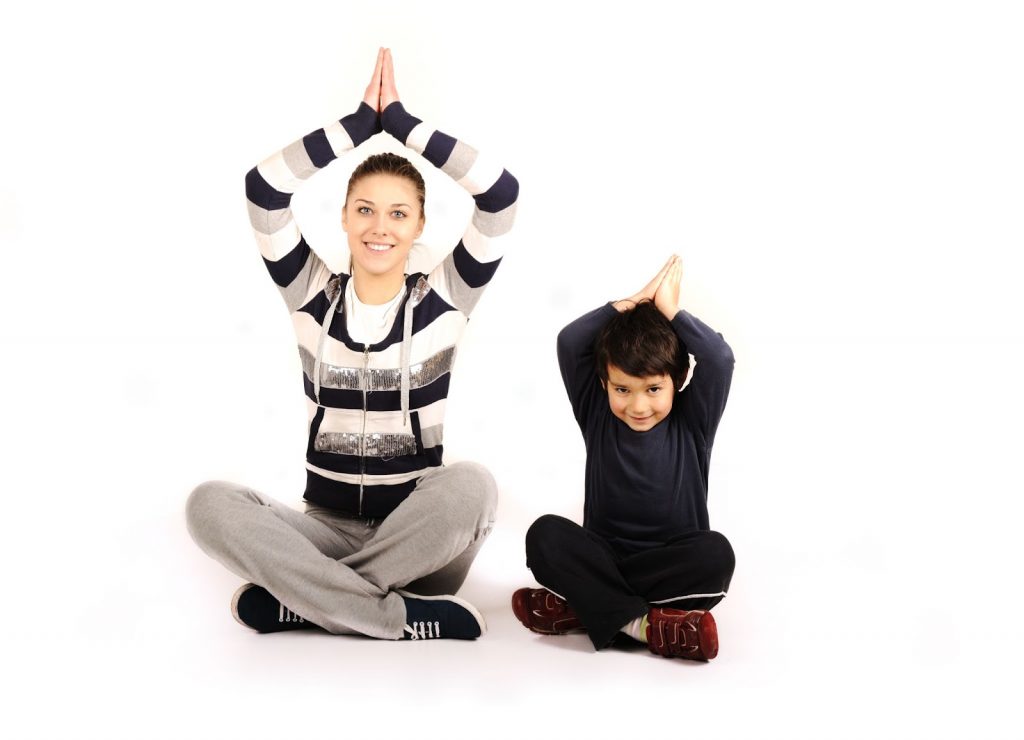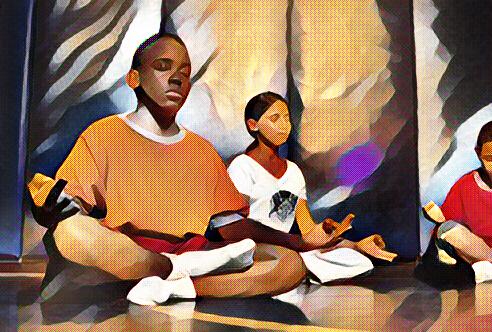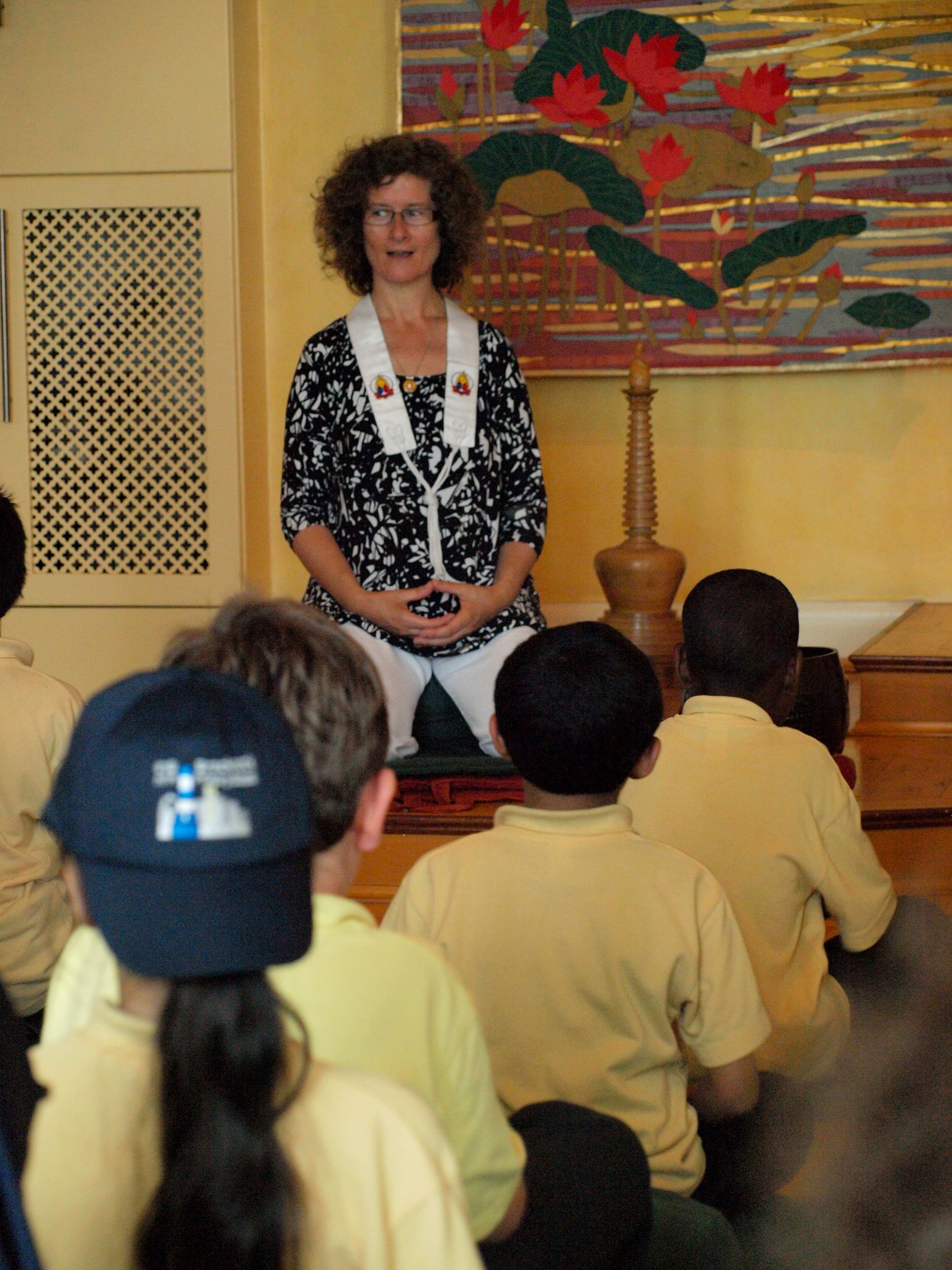Guest post by: Jewell Singletary, founder of Gratitude Griot
Meditation should be mandatory in schools to help students manage their mental health. Substantial scientific study has supported the therapeutic efficacy of mindfulness meditation practices. Though meditation is traced to spiritual traditions and teachings, the techniques are non-secular and accessible to everybody with breath in their body. A consistent meditation practice promotes mental clarity and a bevy of benefits to boost book smarts and budding brains. Below is a breakdown of the advantages of meditation in schools at every level of learning.

PRE-SCHOOL
The littlest learners are likely stepping into school for the first time feeling scared, stressed, or excited about the new adventures that await. The classroom could lead to frustrations with ABCs and 123s or struggles with social skills. Meditation can help manage big emotions in little people by teaching emotional regulation.
Try this balloon meditation to calm and quiet a class. Dim the lights and instruct all the children to lie down on their backs on the classroom carpet. Pretend that a big balloon is tied to each child’s wrist. Take some big belly breathes in and out to guide the children to focus on the balloon floating with their breath. With each exhalation, the balloon creeps closer to the clouds and the sun in the sky. As the balloon drifts further up up up and away the child’s arm levitates and lifts to the air. Lower your voice the higher the balloon floats into the atmosphere. Repeat the prompts in a soft and gentle voice while pretending the balloon is attached to each wrist and ankle. Close the five-minute visualization meditation with the balloon tied to the child’s belly button, and play pretend that their whole body floats away.
ELEMENTARY SCHOOL
Kindergarten through 4th-grade students were born in the age of social media and stifled social skills. Constant comparison and vicious comments contribute to an increase in self-harm and suicide attempts. The crisis is particularly concerning in communities of color. Students are struggling to set boundaries with friends and succumbing to stressors and social pressure. This age group benefits from the ability to build confidence and develop stronger social skills through meditation.
Try this elementary age-appropriate meditation to build body awareness and boost confidence. The students can be seated at their desks with their hands resting on their legs. Start with three big belly breathes to clear the energy in the class, then guide the students from feet up to head in a body scan. Direct the children’s attention towards their feet and the feelings of safety and security. Reinforce their ability to stand up for themselves. Move the student’s attention up to their lower belly. Fortify feeling free to express creatively. Move their minds up to the space just above their navels to confirm they can feel confident. The awareness then centers the chest and heart space. Emphasize feelings of love, compassion, and connection. Guide their attention towards the throat and encourage the students to always speak the truth. They will need their mind’s eye imagination to access their third eye and intuition; instill in them to trust their insight. Close the meditation at the crown and a thankful thought of positive appreciation.
MIDDLE AND SECONDARY SCHOOL
Middle school meditators might be combatting bullies or body positivity issues as they develop through puberty. High School students have a unique set of stressors. In modern America, the constant threat of gun violence is commonplace. Social media toxicity is ever prevalent. Young people are freer to explore their gender identities and sexuality. Layer in the anxiety about the unknowns in the next stage of life and the transition to adulting. Mindfulness meditation in middle and high school helps build resilience and resistance to peer pressure. It can also increase body positivity and improve self-esteem. Read this recap to review the impact of mindful movement, meditation, and emotional intelligence discourse on a group of pre-college prep school students in Newark, NJ.
Try this technique on teenagers. Box breathing is a geometric breath pattern best practiced either standing or sitting. Pro Tip: If your students have been stagnant have them stand to practice this brief breath meditation and allow some fresh blood to flow to their lower legs and feet. Start with noticing the normal, natural cadence of each exhale and inhale. When they are ready, prompt the students to breathe in and count to four, hold to a count of four, exhale to a count of four and then hold to a final four count. Practice a few rounds in a row, then return to the baseline breath and the natural pattern. Notice any sensations.

GENERAL EDUCATIONAL DEVELOPMENT
Maybe high school wasn’t the jam, or life took a turn. Students decide to pursue their GED or trade school for a variety of valid reasons. Students in these types of educational programs are likely to be juggling their school studies, work, family, and children. Developing a meditation practice at this stage in life can help improve focus and manage their myriad of stressors saddled to adulthood.
Affirmations are a powerful practice that can keep students concentrated on their goals and influence the subconscious mind to prioritize positivity over negative-self talk. Try repeating this affirmation in any school setting. I am smart. I am capable. I am prepared. I am an intelligent master of my mind. I always bring my best to every test.
POST-SECONDARY SCHOOL AND POSTGRADUATE EDUCATION
Undergraduate students at the collegiate and university levels may be on campus or commuting. They could feel the pressure of being the first in their family at post-secondary school, or maybe it’s their first time on their own. They may be overwhelmed with autonomy, managing a syllabus, and other aspects of navigating higher education. Graduate students are more likely to experience depression and anxiety as compared to the general population. Academic administrators and policymakers are implementing intervention strategies like meditative practices to address this mental health crisis. A prime example is the Harvard University Health Services Center for Wellness and Health Promotion program that includes yoga, meditation, and other holistic wellness practices to help students stifle stress and beat burn-out.
Try this exaggerated exhalation meditation to tap into the body’s built-in relaxation response in the parasympathetic nervous system. A slow and controlled breathing pattern practice is boundless. In a seated or reclined position, notice the natural breath for the first few rounds of inhalations and exhalations. Inhale through the nostrils. Draw the navel inward. Exhale to puff the stomach outward. Keep breathing slowly and deliberately like this to adjust to the breath. When the student is ready, inhale to a slow count of four. Hold the breath for a brief moment at the top of the inhale before a long slow exhale to a count of 5 or more. Repeat these steps as many times as feels right. Return to the normal breath and notice any changes or sensations.
SPECIALTY AND PROFESSIONAL SCHOOLS
Meditation is for Ph.D. professional students, med school attendees, and those in their residencies. Law school students and those studying to pass the bar can all benefit from the brain-boosting benefits of meditation. Neuroscientists have found that meditators grow their grey matter which supports mental clarity and calmness.
The super stressed can try this balancing breath to alleviate anxiety and clear a cluttered brain cavity. Alternate nostril breathing is best practiced from a comfortable seat. Practitioners will use the fingers on the right hand to close off alternating nostrils. Pinky and thumb fingers remain upright while the ring finger, middle, and pointer press into the palm. Start with the natural breath. When ready, place the thumb over the right nostril and inhale and exhale through the left nostril. Use the pinky to close off the left nostril, then inhale and exhale through the right nostril. Continue to alternate for three rounds on each side. Return to normal breathing and notice any nuances in a rested state.
MORE MEDITATION IN SCHOOLS
The western world has worked hard to validate meditative practices through clinical research studies. Evidence-based research reveals the psychological and somatic benefits of meditation for both students and teachers. These studies have concluded that meditation is proven to positively impact a plethora of physical and psychological benefits like stress reduction, improved immunity, and increased resilience. The Canadian Psychological Association reported that “promoting self-care practices for teachers within school settings is critical to provide an atmosphere that fosters teacher well-being.” Students and teachers need social support and constructive coping skills to be successful. Meditation in schools is an easily accessible way to improve social-emotional learning and positive outcomes for students and teachers.
ABOUT THE AUTHOR: Jewell Singletary is a creative entrepreneur, educator, and multidisciplinary artist. She is a writer who runs Thee Be Well Blog and a YouTube channel called Gratitude Griot in which she shares guided meditations and beginner yoga classes to help reduce stress. Jewell also hosts the Yoga Wit the Ohmies Podcast, the h[ohm]e of healing conversations around all things mental, physical, and spiritual well-being.
- Bell Peppers 101: Nutrition Facts and Health Benefits - April 19, 2024
- Products That Assist with Stress Relief - September 21, 2023
- TRÈFLE – THE ROAD TO THE 15TH - July 29, 2023






